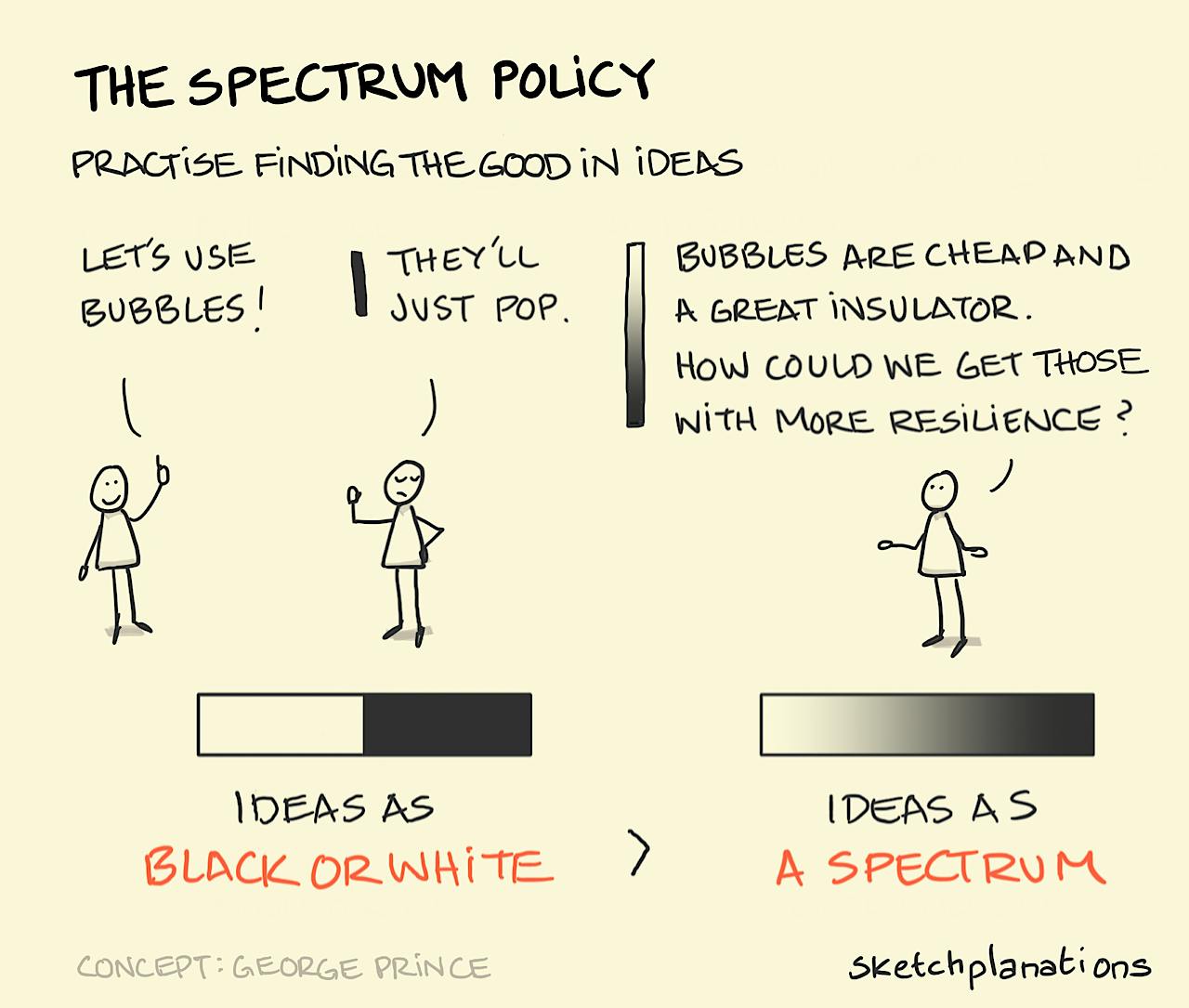The spectrum policy

- Prints
- Copied!
👇 Get new sketches each week
One of my favourite books is a rather dog-eared 1970 edition of The Practice of Creativity by George Prince . The book gives wonderful examples and tools for having successful creative discussions in meetings. So much, George lays out, hinges on genuine listening to understand others points of view, and creating a space which protects the egos of people in the meeting, creating an atmosphere of psychological safety. One really simple tool and reframe he offers is the spectrum policy.
The spectrum policy acknowledges that few ideas will come out fully-formed and solve a problem perfectly in one go. Often our first reaction on hearing something is to evaluate it. When we hear an idea we can't help but see the negative aspects of an idea — the things that obviously won't work — and because of these negative aspects we may dismiss the whole idea. The idea is good, or it is bad. As well as the group losing out on what may have been the genesis of a solution, the originator can often feel snubbed and retire from full participation in the rest of the meeting.
With the spectrum policy we recognise that, "because you are never dealing with fools", all ideas put forward, even if we see obvious flaws, will have some good points as well as the bad. Before pointing out the flaws we make a point of finding the good in an idea and acknowledging it. This keeps elements of the idea available to build on for others and the egos of all participants intact and fully engaged in solving the problem.

